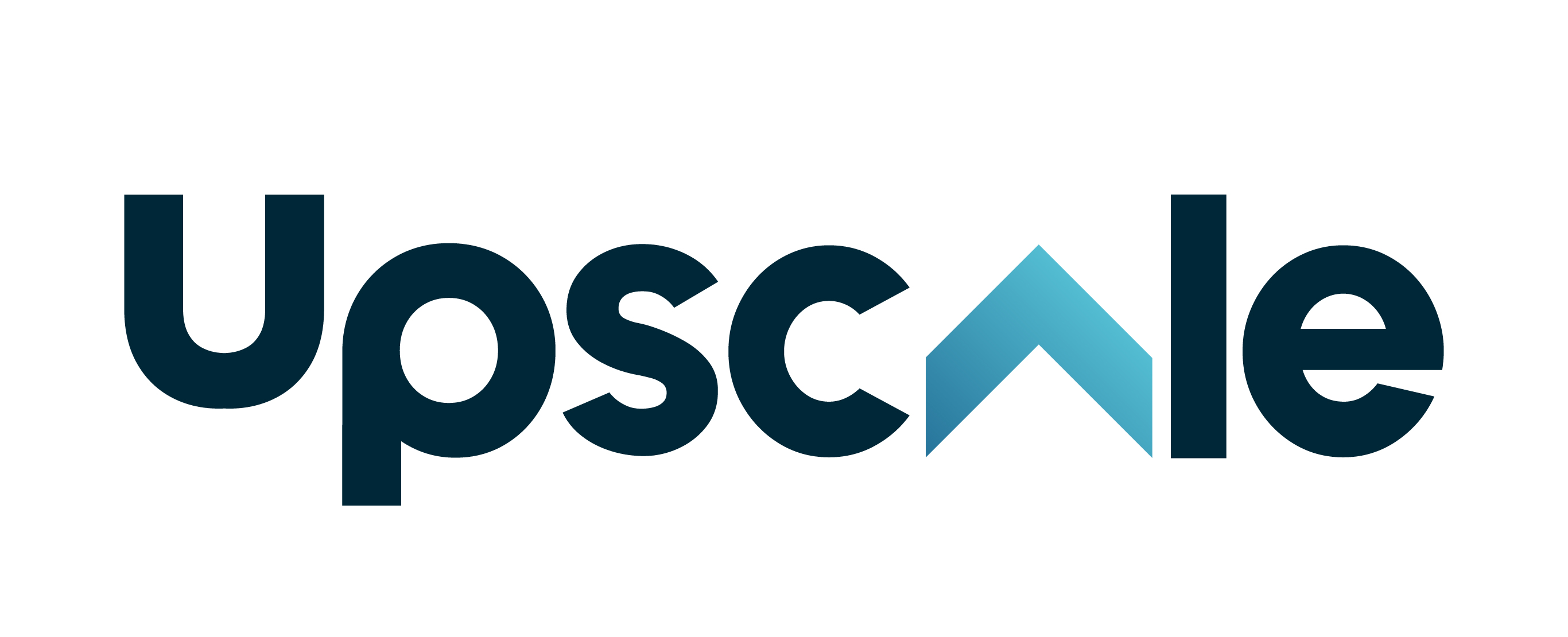Unlocking the Full Potential of HR Analytics in Talent Acquisition
Mon, 12 Feb 2024

Are you looking to make smarter decisions in talent acquisition? Unlocking the full potential of HR analytics can help you do just that.
You might think HR analytics is just another corporate buzzword, but it's actually a transformative tool that can supercharge your talent acquisition process.
With the increasing use of data and technology in human resources, HR analytics has emerged as a powerful tool for optimising talent acquisition strategies.
Whether you are an HR professional or a business leader looking to optimise your talent acquisition efforts, understanding the potential of HR analytics is crucial in today's competitive job market.
In this guide, we'll explore the role of HR analytics in talent acquisition,
Stay with us as we delve into the future of recruitment powered by HR analytics, introduce you to innovative analytical tools, and share how businesses have harnessed the power of data.
What Does HR Analytics Mean?
HR analytics, often referred to as people analytics, is a data-driven approach to managing people at work. By leveraging data, you can make more informed, strategic decisions about your workforce.
You see, HR analytics isn't just about collecting data; it's about using that data strategically.
It's about understanding the patterns and trends in your data and using this insight to improve your talent acquisition strategy.
For instance, you might use HR analytics to identify which sources of hire yield the best candidates, helping you streamline your recruitment efforts.
But don't stop there. Dig deeper. Use your data to unearth hidden insights.
Are some sources of hire more effective for specific roles?
Are there patterns in the time it takes to fill different types of positions?
The answers to these questions can help you optimise your talent acquisition process.
Role of HR Analytics in Talent Acquisition
Enhancing Recruitment Efficiency
HR analytics can boost your efficiency in finding and hiring top talent. It's all about using data-driven insights to make your recruitment process as smooth and effective as possible.
For example, HR analytics could help you pinpoint the most productive channels for finding potential candidates, saving you from spending time and resources on methods that aren't working as well.
Also, consider how analysing data from past hiring efforts can guide your decision-making. It can give you a clearer idea of where to put your energy when recruiting.
Improving Quality of Hire
HR analytics is your secret weapon to transform your recruitment process, ensuring you're not just hiring but hiring the right person for the proper role at the right time.
It's a tool that helps you delve deep into the nitty-gritty of your recruitment process, helping you spot where things might be getting stuck and where you can make improvements.
One game-changer here is how HR analytics can help you understand the quality of your hires.
By looking at the data on your most successful hires, you can figure out what characteristics and qualities usually lead to excellent job performance. This information can be a game-changer, helping you tailor your recruitment strategy to look for these qualities in future candidates.
And it doesn't stop there.
HR analytics can also help you determine where your best hires are coming from.
Which recruitment channels are bringing in the stars? By predicting hiring outcomes based on past data, you'll have a strategic edge in planning your recruitment pipeline.
With HR analytics, you're not just making decisions; you're making smart, data-driven decisions.
Promoting Diversity and Inclusion
HR analytics can be crucial for promoting diversity and inclusion in your workplace.
By closely examining demographic data, you can spot patterns and trends that may show biases in your hiring process. This can be a wake-up call for you to make necessary changes and ensure a fairer recruitment process.
Keep an eye on critical metrics, such as the representation of different groups in various roles and levels within your organisation, and you can evaluate how effective these initiatives are. If needed, you can make the necessary adjustments.
This hands-on approach can help you achieve your diversity and inclusion goals and nurture a more inclusive culture in your workplace.
Supporting Strategic Workforce Planning
Regarding strategic workforce planning, HR analytics can be your best friend, helping you foresee future talent needs. This is handy as it can guide you in forming recruitment strategies that match these predicted needs.
Also, HR analytics can help you spot any skills gaps within your organisation by focusing on recruiting candidates with the necessary skills. This ensures you have the right talent to meet your strategic objectives.
And there's more. HR analytics can help you understand what influences a candidate's decision to accept an offer.
This way, you're armed with the knowledge to create attractive offer packages and give you a peek into attrition rates. This would help you to develop strategies to keep your employees around for the long haul.
Innovative HR Analytical Tools Being Used
Predictive Analytics
Predictive analytics leverages statistical algorithms and machine learning techniques to predict future hiring needs.
This tool helps HR teams to forecast which applicants are likely to be successful in the job based on their past data, thereby improving the quality of hires and reducing the cost of bad hires.
Moreover, it aids in predicting the likelihood of a candidate leaving the job, which helps in employee retention strategies.
IBM is a well-known brand that uses predictive attrition modelling. They have developed an AI model capable of predicting with 95% accuracy which employees are planning to leave.
This helps the company take proactive measures to retain valuable employees, saving millions in hiring and training costs.
Another example of predictive analysis in HR analytics could be the prediction of employee turnover.
For instance, an organisation could use HR data like employee performance ratings, attendance records, job satisfaction surveys, and length of service to create a predictive model.
This model could then forecast if and when an employee might leave the organisation, providing the HR team with valuable insights.
With this prediction, the company can proactively retain employees, such as offering promotions and raises or addressing job satisfaction issues. This predictive analysis helps to reduce employee turnover costs and maintain productivity within the organisation.
Social Media Analytics
Social media analytics allows HR teams to leverage data from social media platforms to gain insights into candidate behaviour, preferences, and trends.
It aids in understanding what potential candidates are looking for, thereby enabling HR teams to tailor their recruitment strategies accordingly.
Also, consider the power of social listening tools. These can monitor online conversations about your company, giving you a real-time gauge of your employer brand.
Zappos, an online shoe and clothing retailer, uses social media analytics as a part of its HR analytics. The company uses social media platforms like Twitter and Facebook to monitor employee engagement and company culture.
They track posts and share about company events, work environment, and team activities. This social media engagement analysis helps them understand overall employee satisfaction and morale. They even encourage their employees to use the hashtag #ZapposCulture when posting about their work.
Consequently, Zappos also uses this analysis to strengthen its employer branding.
Potential employees can review these posts and get a feel for the company culture before joining.
This way, social media analytics is helping Zappos not only in maintaining an excellent work environment but also in attracting talent that fits into their culture.
HR Metrics and Dashboards
HR metrics and dashboards are other crucial HR analytical tools that can unlock the full potential of HR analytics in talent acquisition. These tools visually represent key HR data, helping teams understand and analyse data quickly and efficiently. HR metrics can include data on time to fill, cost per hire, recruitment conversion rates, and more.
Conversely, dashboards present this data in an easy-to-understand format, allowing HR teams to make data-driven decisions quickly. This tool is particularly useful in talent acquisition as it will enable HR teams to track the effectiveness of their recruitment strategies and make necessary adjustments to improve outcomes.
Google is a prime example of a company that leverages HR metrics and dashboards for HR analytics. Known for its data-driven approach, Google uses a system called "People Analytics". This system is used to collect and analyse data related to its employees, including performance metrics, employee satisfaction, and even predictive modelling to understand future trends.
One of the tools Google uses is "Work Insights", a dashboard that provides insights about their teams' work patterns and behaviours. It helps them understand how teams collaborate and spend time, enabling leaders to make more informed decisions about productivity and efficiency.
Google also conducts an annual survey called "Googlegeist". This survey gathers data on various aspects of the work environment, including management effectiveness, work-life balance, and career development opportunities.
The results, shared via dashboards, help guide improvements and changes in the company's HR policies and practices.
Future of HR Analytics in Recruitment
Looking ahead, you'll find that the future of HR analytics in recruitment is poised for significant transformation and growth.
Adapting to this change isn't an option; it's a necessity.
In a world driven by data, you'll need to harness the power of analytics to create strategic recruitment plans.
Artificial intelligence (AI) and machine learning (ML) will be key in HR analytics.
These technologies will help you sift through vast amounts of data, identify patterns, and predict future recruitment trends. You'll be able to predict the 'perfect fit' for a role, reduce turnover rates, and increase employee satisfaction.
Real-time analytics is another game-changer. It'll allow you to make quick, data-driven decisions, enhancing the efficiency of your recruitment process. You'll no longer have to rely on gut feelings or instincts.
However, with great power comes great responsibility. You'll need to ensure the ethical use of data and respect candidates' privacy. Transparency and accountability will be paramount.
—---
Our solutions at Upscale enable businesses like yours to unlock the full potential of HR and talent acquisition.
With our expertise in HR analytics and talent sourcing, we can help you leverage data to make smarter hiring decisions and optimise your talent acquisition process.
Reach out to us at upscale.my so we can discuss how our solutions can benefit your organisation and help you stay ahead in the evolving landscape of HR analytics in recruitment.
Together, let's unlock the full potential of HR analytics and revolutionise your talent acquisition strategy!
<!--EndFragment-->
